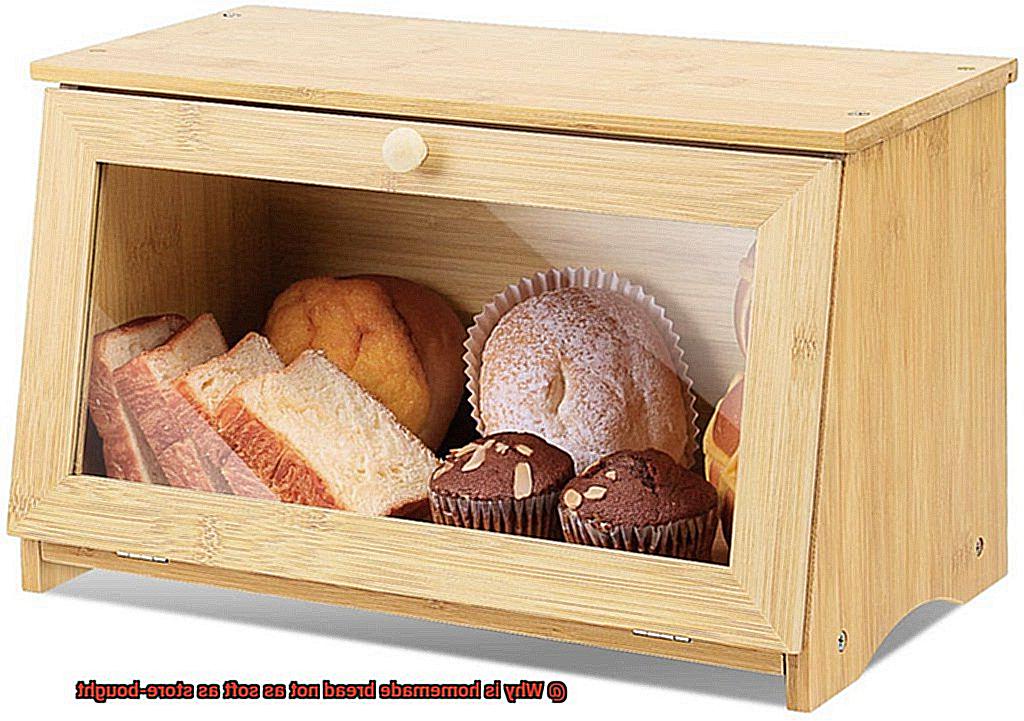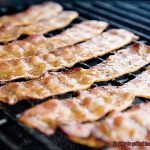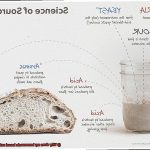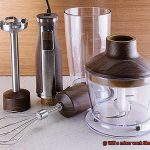Do you ever feel like your homemade bread is more like a weapon than a meal? Are you constantly wondering why it never quite measures up to the soft, fluffy loaves found at the grocery store? Well, don’t throw in the towel just yet.
Many home bakers struggle with achieving that perfect texture in their bread. It can be frustrating when you’ve put in all that effort and still end up with something that could double as a doorstop. But fear not, we’re here to help.
The secret to soft and fluffy bread lies in a few key factors: flour type, dough hydration level, and preservatives. Yes, even those pesky preservatives play a role in keeping store-bought bread pillowy-soft for days on end.
But don’t worry, we won’t leave you hanging. In this blog post, we’ll break down the science behind bread-making and explain how these factors impact your homemade loaves. We’ll also provide some tips and tricks to help you achieve bakery-worthy results every time.
So let’s get ready to knead our way to success.
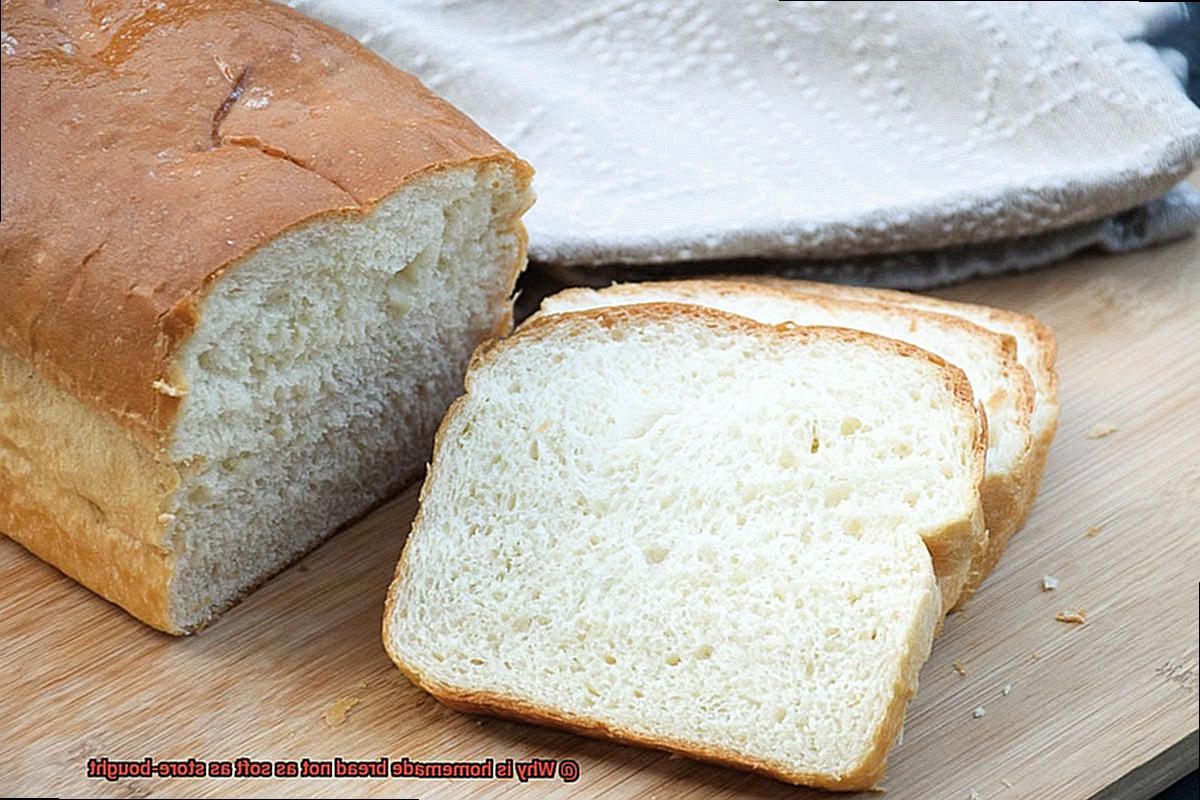
Contents
Difference between Homemade Bread and Store-Bought Bread
Homemade bread often boasts a denser, heartier texture, while store-bought bread is softer and fluffier. But what exactly causes this contrast?
The primary factor is the ingredients used in each type of bread. Store-bought bread is commonly made with preservatives, dough conditioners, and other chemicals that help to soften the bread and extend its shelf life. These additives produce a uniform texture throughout the loaf, but it comes at the cost of naturalness. Homemade bread, on the other hand, is made with natural ingredients like flour, water, yeast, and salt. This results in a more authentic taste and texture that many people prefer.
Another aspect that contributes to the softness of store-bought bread is the use of high-speed mixers and industrial baking equipment. These machines produce a consistent texture throughout the loaf, which can be difficult to achieve when kneading by hand or with a stand mixer. However, this uniformity often comes at the expense of character and individuality.
In contrast, homemade bread can have an uneven distribution of ingredients due to kneading by hand or with a stand mixer. This can result in a denser texture that many people enjoy for its heartiness and satisfying taste. Additionally, homemade bread often uses unbleached flour that retains more of the wheat kernel’s natural nutrients, resulting in a denser texture.
Lastly, experience and technique play a role in achieving a soft and fluffy homemade bread. It requires a certain level of skill and knowledge to perfect factors such as kneading time, proofing time, and oven temperature. With practice and experimentation, it’s possible to achieve a softer texture in homemade bread as well.
Reasons Why Store-Bought Bread is Softer
It’s like sinking your teeth into a pillow. As an expert in this topic, I can tell you that there are several reasons why store-bought bread is softer than homemade bread.
Firstly, store-bought bread often contains additives such as emulsifiers and dough conditioners that improve its texture, appearance, and shelf life. These dough conditioners contain enzymes that break down the starches in the flour, making it easier to digest and resulting in a softer texture. They also help to strengthen the dough and make it more elastic, which results in a softer and more tender crumb.
Secondly, the production process of store-bought bread is designed to create a finer crumb and more uniform texture. Commercial bakeries often use high-speed mixing equipment and specialized techniques that can produce a consistent loaf of bread. They may also use flour blends that have been specifically formulated for certain types of bread, resulting in a softer crumb.
Additionally, store-bought bread often uses commercial yeast that is more potent than wild yeast used in homemade bread. This results in a lighter, fluffier texture as commercial yeast produces more gas. Moreover, commercial yeast ferments faster than wild yeast, allowing the dough to be processed more quickly, resulting in a softer texture.
Lastly, commercial bakeries often use specialized baking techniques that result in a soft crust and fluffy interior. Steam injectors during the baking process create a humid environment inside the oven that helps keep the crust soft and pliable, resulting in a softer overall texture.
Additives in Store-Bought Bread
The answer lies in the use of additives in store-bought bread. These additives enhance the texture, flavor, and shelf life of the bread. As an expert on this topic, let me take you through some of the most common additives used in store-bought bread.
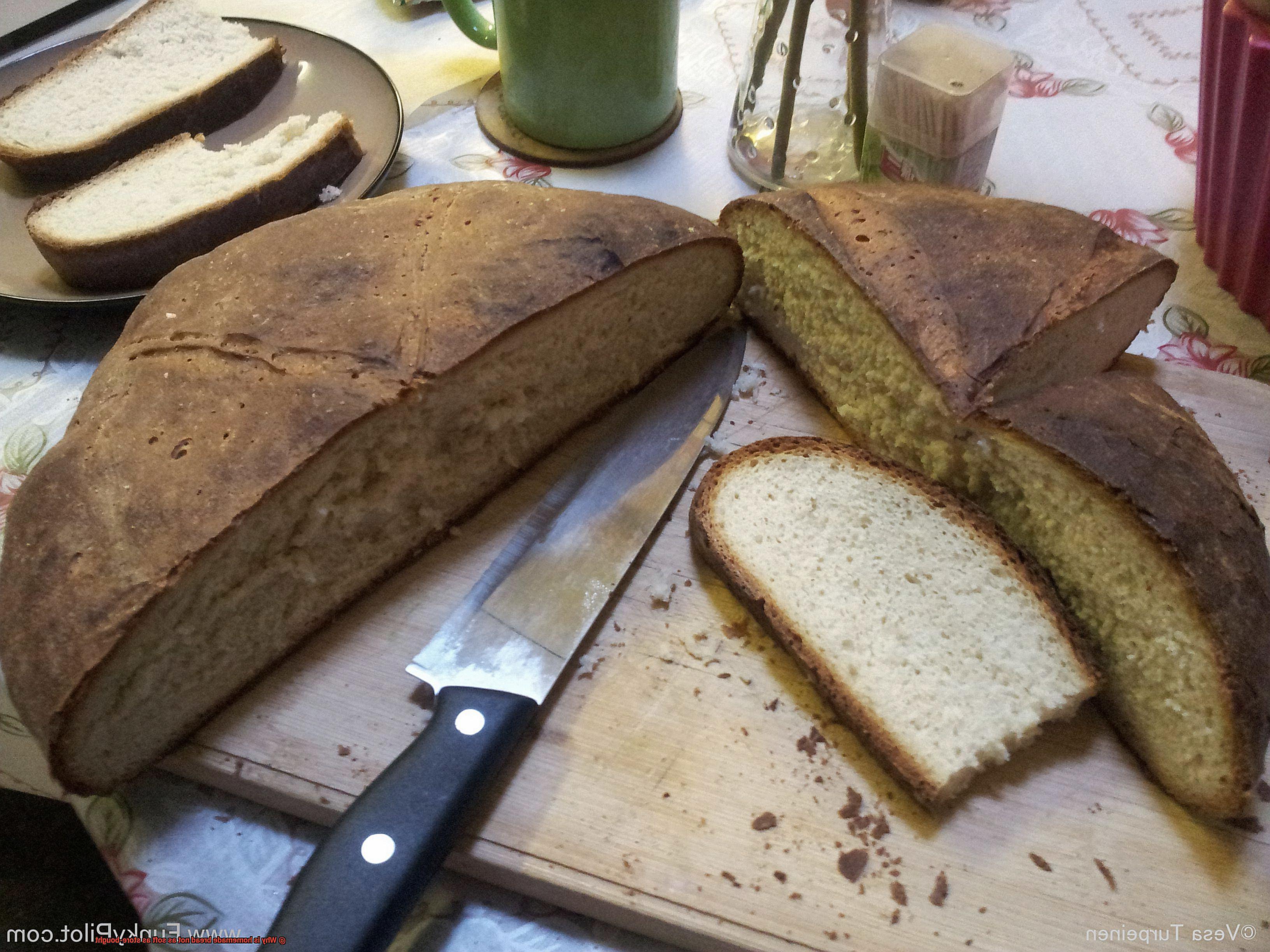
Dough conditioners are one of the most prevalent additives used in store-bought bread to create a softer texture. These conditioners include enzymes, oxidizers, and emulsifiers that help strengthen the gluten in the dough, resulting in a more elastic and pliable texture. This elasticity allows for a softer and more uniform crumb structure in the finished product.
Preservatives are another critical ingredient in store-bought bread. They help prolong the shelf life of bread by inhibiting mold growth and preventing spoilage. Calcium propionate is a common preservative used in store-bought bread. While homemade bread may not contain these preservatives, it also doesn’t have the same extended shelf life as store-bought bread.
Commercial yeast is also a factor that contributes to softness differences between homemade and store-bought bread. Store-bought bread uses highly processed and standardized yeast strains that produce a consistent rise and texture. In contrast, homemade bread made with natural yeast or sourdough starter may have a different texture due to variations in fermentation and rising times.
While additives contribute to the softness of store-bought bread, they also have their downsides. Some people prefer homemade bread because it is free of additives and preservatives, making it a healthier option overall. Additionally, many people enjoy the unique taste of homemade bread, even if it is not as soft as store-bought options.
Refined Flour in Store-Bought Bread
Now, we’re going to explore the fascinating world of refined flour in store-bought bread. Have you ever noticed that store-bought bread tends to be softer than homemade bread? Well, one of the main culprits behind this is refined flour.
Refined flour is produced by extracting the bran and germ from wheat kernels during processing, leaving only the starchy endosperm. This process gives the flour a finer texture and a longer shelf life, making it an ideal choice for commercial bread production. However, it also strips away essential nutrients such as fiber, vitamins, and minerals. So while refined flour makes bread softer, it’s not as nutritious as its whole wheat counterpart.
But that’s not all. Refined flour also contains more gluten than whole wheat flour. Gluten is a protein found in wheat that gives dough its elasticity and helps it rise. As a result, refined flour produces airier and fluffier store-bought bread.
Now, if you’re a fan of homemade bread made with whole wheat flour, you may have noticed that it has a denser texture due to its lower gluten content. However, fear not. You can still achieve that softness you crave by adding vital wheat gluten to your whole wheat flour. This will increase the gluten content and produce softer homemade bread without compromising on nutrition.
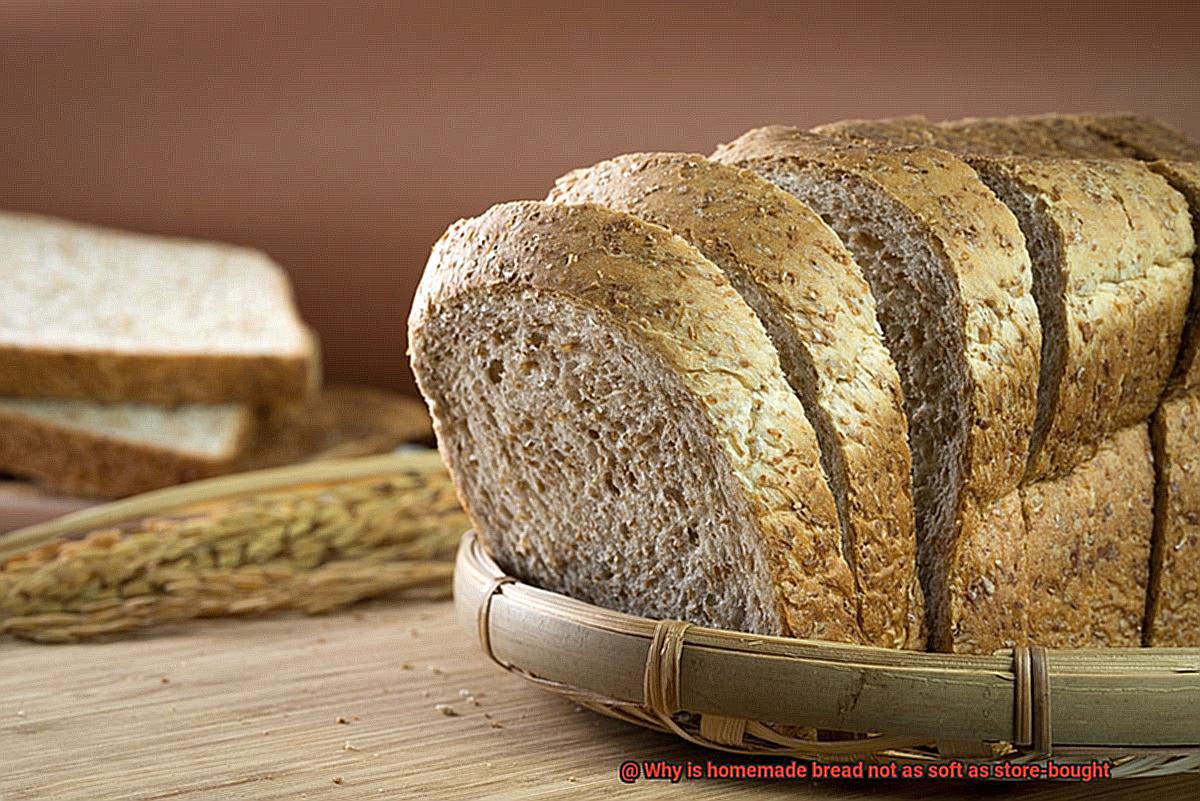
Ingredients Used in Homemade Bread
Let’s dive into the essential ingredients that can make or break the texture and softness of your loaves.
First up is flour. While store-bought bread often relies on highly-refined, bleached flour to create that airy, fluffy texture, many home bakers opt for unbleached or whole wheat flour for a denser, more nutritious loaf. But be careful – the type of flour you use can significantly impact the final product. Experiment with different types and ratios to find your perfect balance of chewiness and fluffiness.
Next, let’s talk yeast. Unlike store-bought breads, homemade bread relies solely on yeast to rise and create texture. But getting the yeast amount just right can be tricky. Too little and you’ll end up with a dense, heavy loaf. Too much and your bread will have an uneven rise. Don’t forget to proof your yeast properly before adding it to your dough.
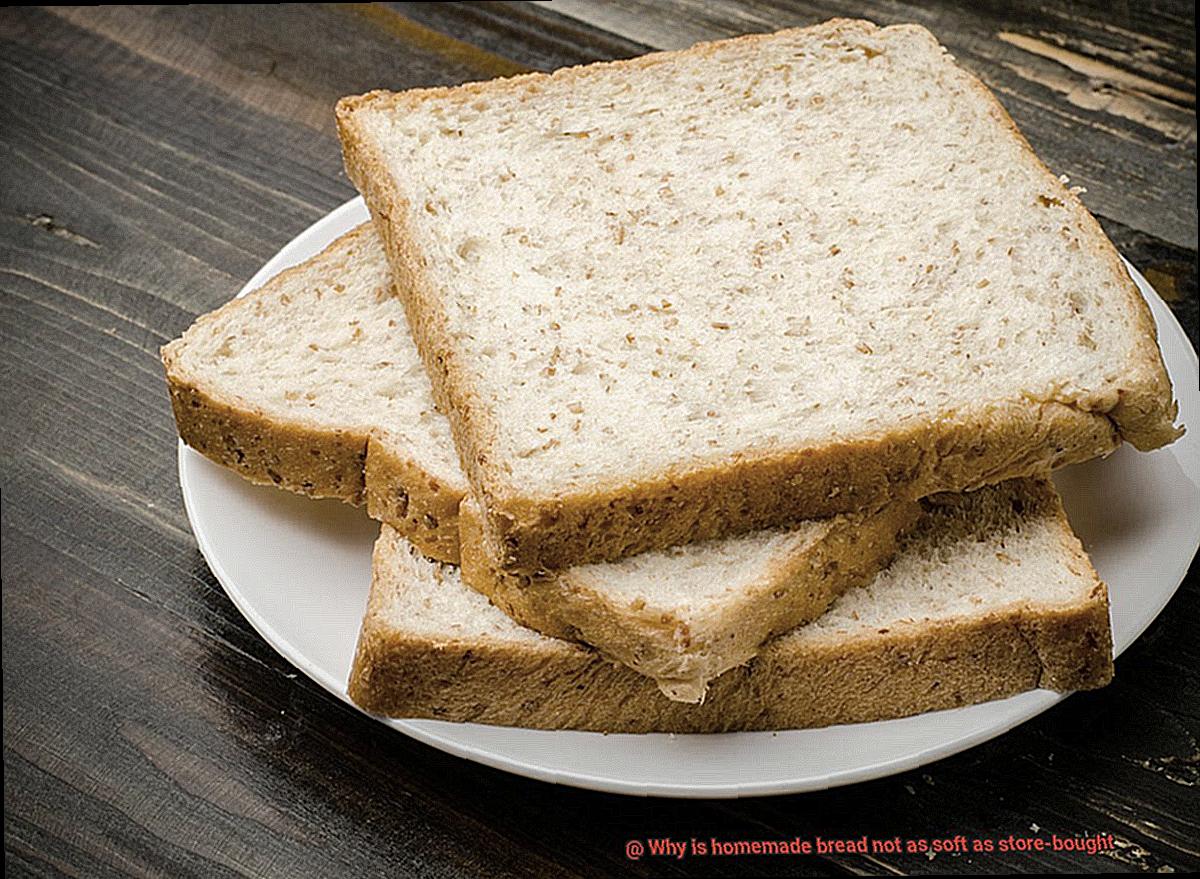
But flour and yeast aren’t the only players in the homemade bread game. Salt, sugar, and fat also play crucial roles in determining the final texture and flavor of your loaves. Salt helps control yeast growth, so make sure you’re adding the right amount (not too much, not too little). Sugar can add sweetness but be careful not to overdo it – too much sugar can make your bread sticky and overly sweet. And finally, adding fat like butter or oil can help create a softer, more tender crumb.
Techniques Used for Making Soft and Fluffy Bread
With the right techniques, you can create homemade bread that’s just as delicious. As an expert in bread-making, let me share with you some tips that will help you achieve that perfect loaf.
Firstly, kneading the dough properly is essential for developing gluten. Gluten is responsible for creating a strong and elastic structure that traps air bubbles during the rising process. Don’t be afraid to get your hands dirty and knead until the dough is smooth and stretchy.
Secondly, ensure that the yeast used in your bread is fresh and active. Old or inactive yeast won’t be able to leaven the bread properly, resulting in a dense and heavy loaf. Always check the expiration date on the package and proof the yeast before adding it to your recipe.
The right amount of flour and liquid is also crucial for creating soft and fluffy bread. Too much flour can make the texture dry and crumbly, while too little can make the dough too sticky and difficult to work with. Similarly, too much liquid can result in a dense loaf, while too little can make it dry and tough.
Lastly, allowing the dough to rise properly is essential for creating those coveted air pockets that give bread its fluffy texture. The dough needs enough time to rise so that the yeast can do its job. However, be careful not to let it over-rise as this can result in a collapsed loaf with a dense texture.
Kneading Time, Proofing Time, and Oven Temperature
If you’re tired of loaves that are too dense, tough, or undercooked, don’t despair. As an expert in bread-making, I can help you achieve that perfect, mouth-watering loaf by understanding the significance of kneading time, proofing time, and oven temperature.
Kneading time is essential to bread-making as it develops gluten in the dough, which gives it structure and elasticity. Knead the dough too little, and the gluten won’t fully develop, resulting in a dense and tough bread. Over-kneading the dough can make it too stretchy and challenging to shape. So how long should you knead your dough? The ideal kneading time is between 10-12 minutes until it’s smooth and stretchy.
Once the dough has been kneaded, it’s time to let it rest and rise through proofing. During this process, yeast ferments the sugars in the dough, producing carbon dioxide gas that causes the dough to expand. If you don’t allow your dough to proof for long enough, it won’t rise enough, resulting in a dense and heavy bread. Over-proofing will cause your bread to collapse and leave you with a flat and unappetizing loaf. The optimal proofing time varies depending on the recipe and kitchen temperature, but a good starting point is 1-2 hours.
Finally, oven temperature plays a crucial role in determining the texture of your bread. If the oven temperature is too low, your bread won’t rise correctly, leading to a dense texture. A high oven temperature will brown the outside of your bread too quickly while leaving it undercooked on the inside. So what’s the ideal oven temperature for baking bread? Most bread recipes call for a temperature between 375-425°F.
i3sP2jwG9jc” >
Conclusion
In summary, the softness of store-bought bread can be attributed to several factors such as preservatives, dough conditioners, and specialized techniques used in commercial bakeries. On the other hand, homemade bread is made with natural ingredients that lack these additives and often require more effort to achieve a desired texture.
However, this doesn’t mean that homemade bread can’t be just as soft and delicious. By using unbleached flour, fresh yeast, proper kneading and proofing times, and controlling elements such as oven temperature, salt levels, sugar levels, and fat content – bakers can achieve a softer texture without sacrificing nutrition or taste. Experimenting with different types of flour and ratios can also lead to finding the perfect balance of chewiness and fluffiness.
While store-bought bread may offer convenience in terms of softness, homemade bread provides a more authentic taste that many people prefer. Plus, it’s free from additives and preservatives making it a healthier option overall. With practice and experimentation at home kitchens with available tools can help achieve bakery-worthy results every time for those who love baking their own loaves.

